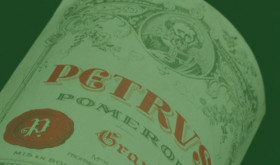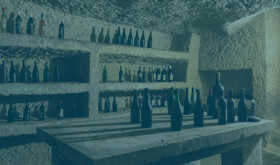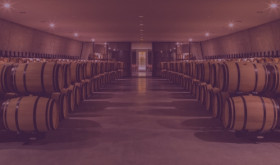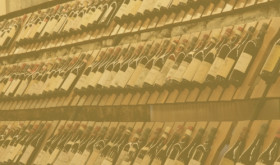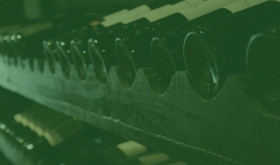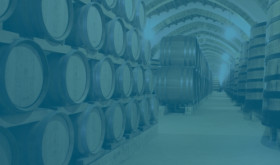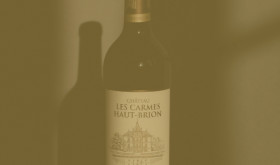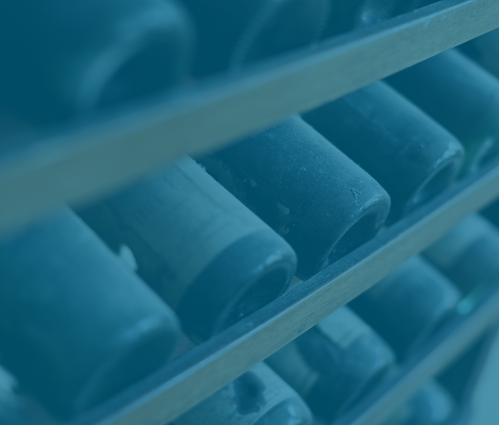
Investments in fine wine have proved exceptionally popular over the recent years, bringing in new buyers and record trades[1]. And it’s easy to see why! There are many advantages to investing in fine wine, especially in the current high-inflation environment. However, before diving in, it’s important to take a step back and consider how fine wine could fit into your overall investment strategy.
Here are six questions to ask yourself before investing:
1. What is your investment goal?
Investment goals are unique to the investor. Some people dream of going on a lavish round-the-world trip, while others are simply looking to afford a comfortable retirement. Whatever your personal goal (or goals), take a moment to write it down.
Calculate how much your goal will cost and how much time you’ve got to get there. This forms the backbone of your investment strategy.
For example, if you’re hoping to put down a £150,000 deposit on a property in a decade, and you can afford to put aside £1,000 a month towards it, you will need to find the additional £30,000. This means your investment goal is to generate £30,000 over the next ten years. The way that you approach it depends on your unique time horizon and risk tolerance.
2. What is your time horizon?
The general rule is the more time you have, the more risk you can afford to take. Of course, there is always a chance with investing that you may get back less than you put in, but over longer periods this risk is mitigated.
Experts mostly agree that if you will need your money in less than five years – say one or two – it’s normally better to put it in a high-interest savings account. If you need it within the next five to ten years, a lower-risk and highly diversified portfolio could be the best option. Blue chip stocks, AAA graded bonds and market index funds could make up the bulk of your portfolio. If you have more than ten years to invest, you can probably afford to take more risk.
Pension fund managers normally follow this rule. Generally, young employees – who have multiple decades of work ahead – will be invested in high-risk illiquid assets. By contrast, those closer to retirement will be transitioned to low-risk, liquid investments.
Time is an important factor to consider as you begin to explore fine wines and consider how they could complement your strategy. As you research bottles, check that the maturity date matches your strategic timeline. Luckily, there are many different fine wines out there to suit different investors. You can effortlessly stay updated on the latest trends fine wine with Wine Track.
3. How much tolerance do you have for risk?
Your investment risk tolerance is nothing to do with your normal risk appetite. It’s about how you feel when the markets are volatile. It’s about whether the idea of your investments soaring and plunging in value makes you excited or nauseous. You could be a sky-diving, base-jumping crocodile physiologist and still feel queasy at thought of market downturns.
Figuring out the level of risk you’re prepared to take with your wealth is a crucial part of designing your investment strategy. After all, you don’t want to lose sleep over your investments, they are there to help you dream – not give you nightmares!
Different asset classes can be broadly grouped into different risk levels. On the lower-risk side, there’s investments like gold, property, or fine wine. These tend to provide stable and steady returns over time. On the higher risk-side are assets like crypto assets, high yield bonds, derivatives, or equity in start-ups. These are more volatile in nature, often soaring and plummeting quickly.
In the current environment, investors looking to mitigate their risk might be interested in inflation-shielding assets. These are usually physical and tangible investments like property, art, gold, collectibles, and of course, fine wine.
4. How much liquidity do you need?
If things take a turn for the worse, how much money will you quickly need to access from your investment portfolio? Or in other words – how much liquidity do you need?
Ideally, investors should not liquidate their portfolio before the right time. Doing so could unbundle the entire investment strategy and mean missed opportunities later down the line. For this reason, experts recommend keeping three to six months’ worth of living costs aside in a high-interest savings account. And many will also advocate to have a healthy surplus in a current account too.
However, sometimes life happens, and investors have no choice but to liquidate. Think carefully about how much of your portfolio you would need to sell in an emergency and how quickly you’d need the cash. This is an important part of planning your strategy.
Some assets can be quickly converted into cash. For example, many of the blue-chip shares and funds – such as those on the FTSE100 or S&P500 could usually sell within 24 hours. However other assets – especially those on the private market – can take several weeks, months or even years.
Generally, for fine wine it can take between weeks and months to sell bottles. But it depends on the time of year, type of bottle and asset maturity. With Wine Track, you can keep a close on the demand and prices of fine wine, so that you’re always up-to-date.
5. How diversified are you?
Nobel-prize laureate Harry Markovitz famously revealed, “Diversification is the only free lunch in investing”. As you build your investment portfolio, it’s important to diversify your revenue streams. This can help to shield your overall wealth from market shocks and prevent one downturn from slashing the value across your entire investments.
Alternative investments – such as art, antiques, commodities, and fine wine – are often used to boost diversification and provide different sources of returns (hence the name).
Because assets like fine wine derive their value intrinsically, they are less affected by the market turbulence outside. They are also traded away from the stock market. This provides a different source of revenue and helps to diversify portfolios.
As you build your overall portfolio, experts recommend aiming for a blend of different asset classes, sectors, and geographical locations. Reaching as far and wide as possible is one of the most effective ways to mitigate exposure to market shocks.
6. What’s your impact on the world?
One of the most profound questions for investors to ask themselves is what effect they’re having on the world around them. How their money is invested can make a dramatic difference on the planet.
Fortunately, many vineyards and fine wine investors care deeply about the environment. The quality of grapes is closely linked to the climate, and many wineries are working hard to adapt and mitigate the effects of the crisis. As an investment that thrives on the prosperity of vines, there’s a strong case to be made that fine wine is an ESG investment.
As you build your portfolio, consider carefully what your wealth is being used for and whether you agree with it. Your choice of investment gives you power and influence, use it wisely.
Discover more about how fine wine reacts in a recession.
[1] Source: Liv-ex
